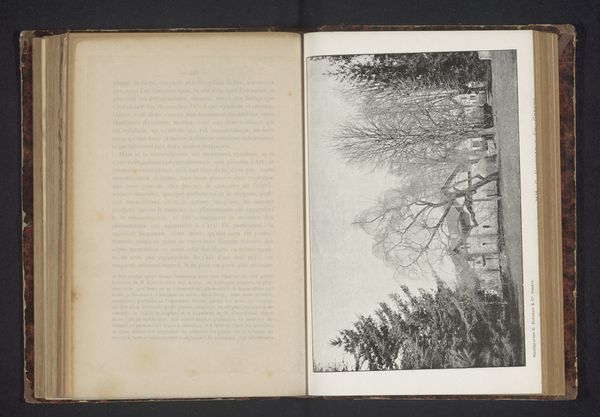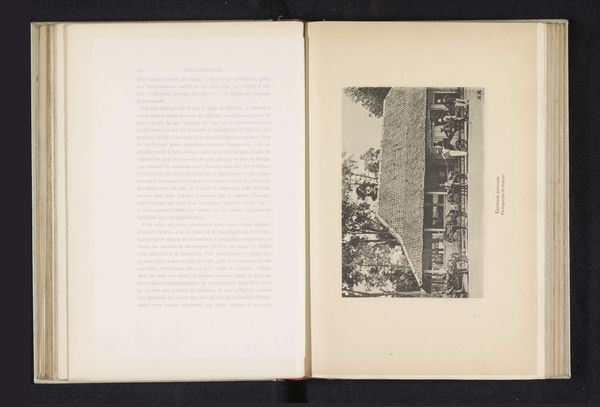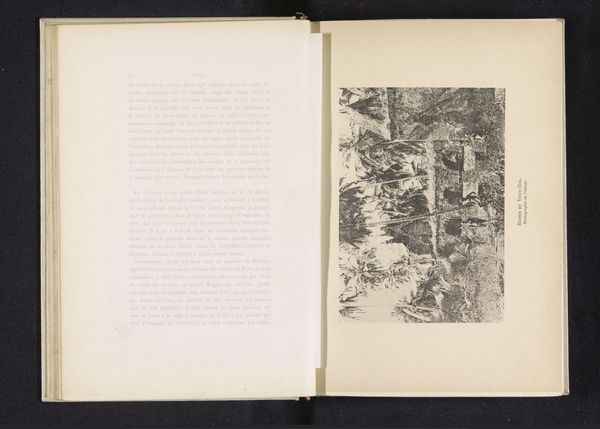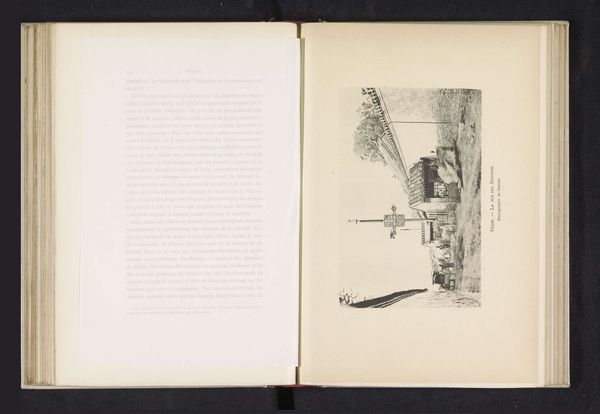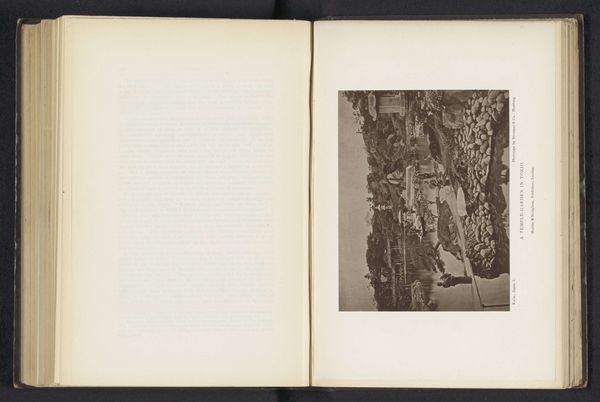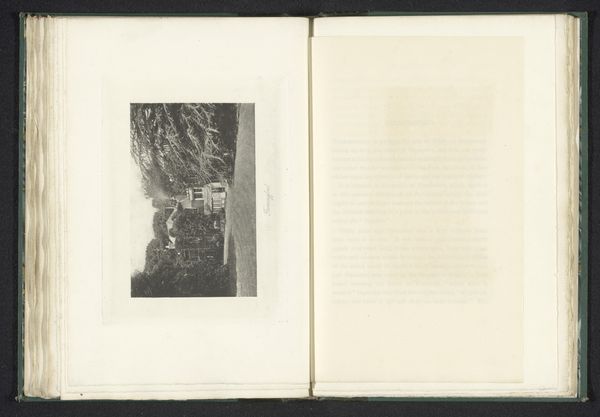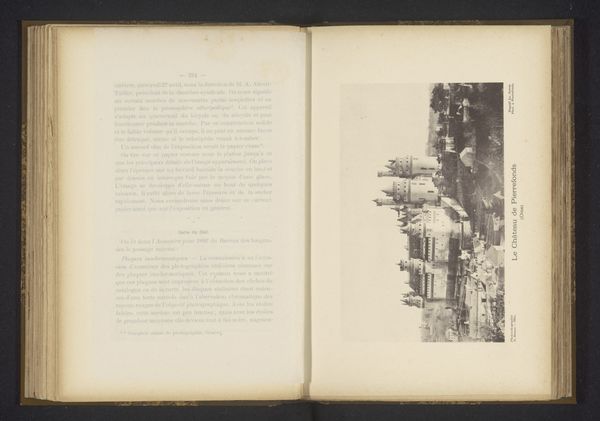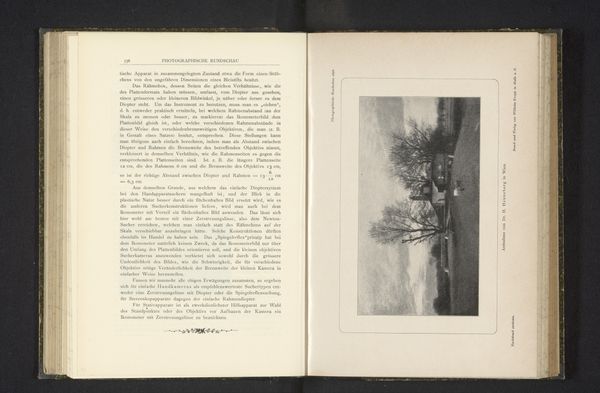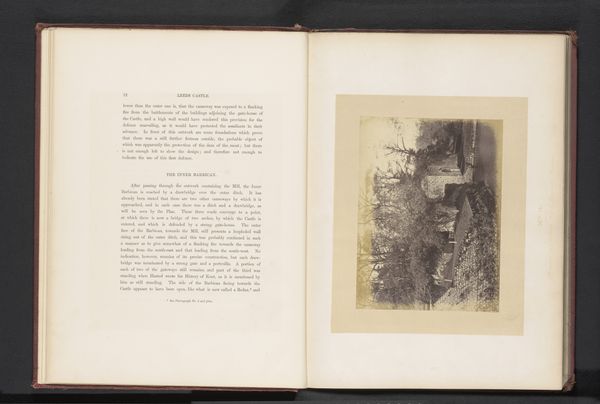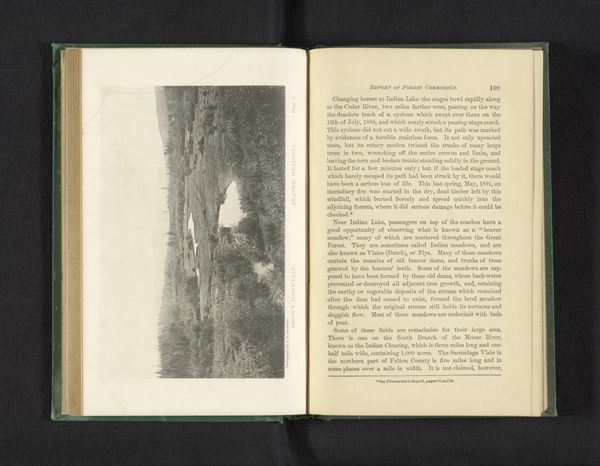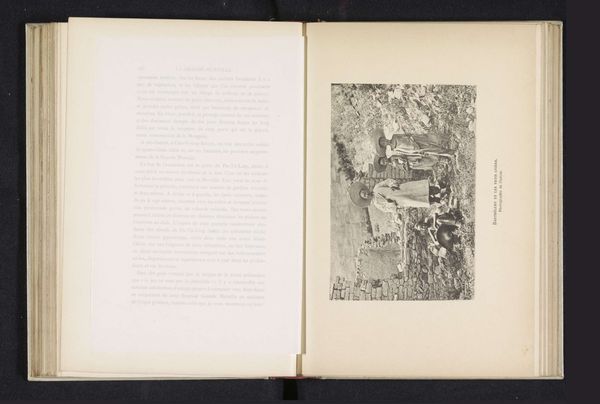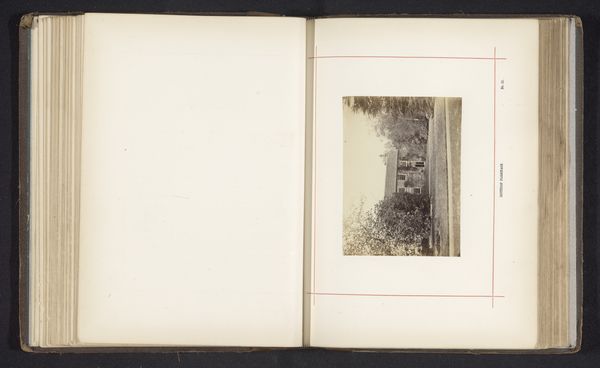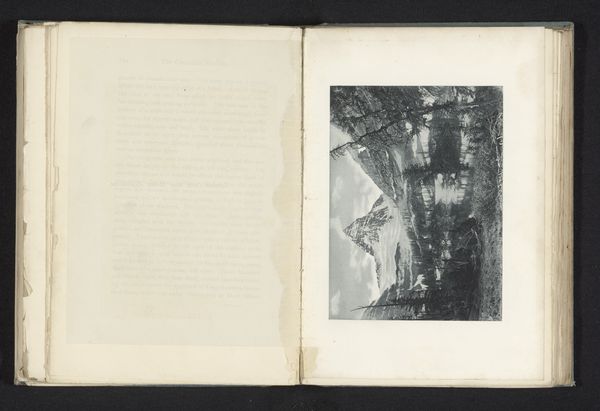
photography
#
landscape
#
photography
Dimensions: height 121 mm, width 172 mm
Copyright: Rijks Museum: Open Domain
Curator: Here we have "Tuin te Tokio, met op de achtergrond een theepaviljoen," which translates to "Garden in Tokyo, with a tea pavilion in the background." It’s a photograph by Hugues Krafft, taken before 1883. Editor: The stark monochrome really grabs you, doesn’t it? The bare branches against that building have an austere beauty. The composition seems almost intentionally... bare. Curator: Well, Krafft was part of a wave of European interest in Japan during the Japonisme movement, and photography itself was still a relatively new medium. I imagine he would have considered the processes and materials accessible for rendering an "authentic" image to be paramount, a direct document of what he found there. Editor: I see layers upon layers here. Literally, with the overlapping tree branches creating depth, but also figuratively. A Westerner’s symbolic vision of Japan, framed for European consumption through photography. Curator: Precisely. The way light interacts with paper during the developing process, the chemical reactions – those would’ve shaped what details were privileged by the mechanical eye. A tea pavilion, a signifier of harmony, rendered in tones of gray and presented as a "truthful" representation. I wonder how the workers who made this photograph felt. Editor: The image of the tea pavilion almost feels like a mirage through those skeletal branches, a common symbol for serenity. And yet it’s mediated, literally and figuratively, by technology, by cultural perception. Curator: Exactly! It's an echo, a refracted version. This photo helps me think of who had access to the equipment and capital required to produce such photographic documentation. The choice of materials also reflects the relationship of colonial power to art at the time. Editor: Fascinating how a simple landscape can contain so much historical information. The act of representing Japan shaped European aesthetics at the time, using symbols in new and powerful ways. Curator: Indeed. Seeing how the process of representing landscapes changed, and being able to scrutinize it materially opens up an investigation of power and access. Editor: A journey into memory—both collective and individual, framed in monochrome.
Comments
No comments
Be the first to comment and join the conversation on the ultimate creative platform.
